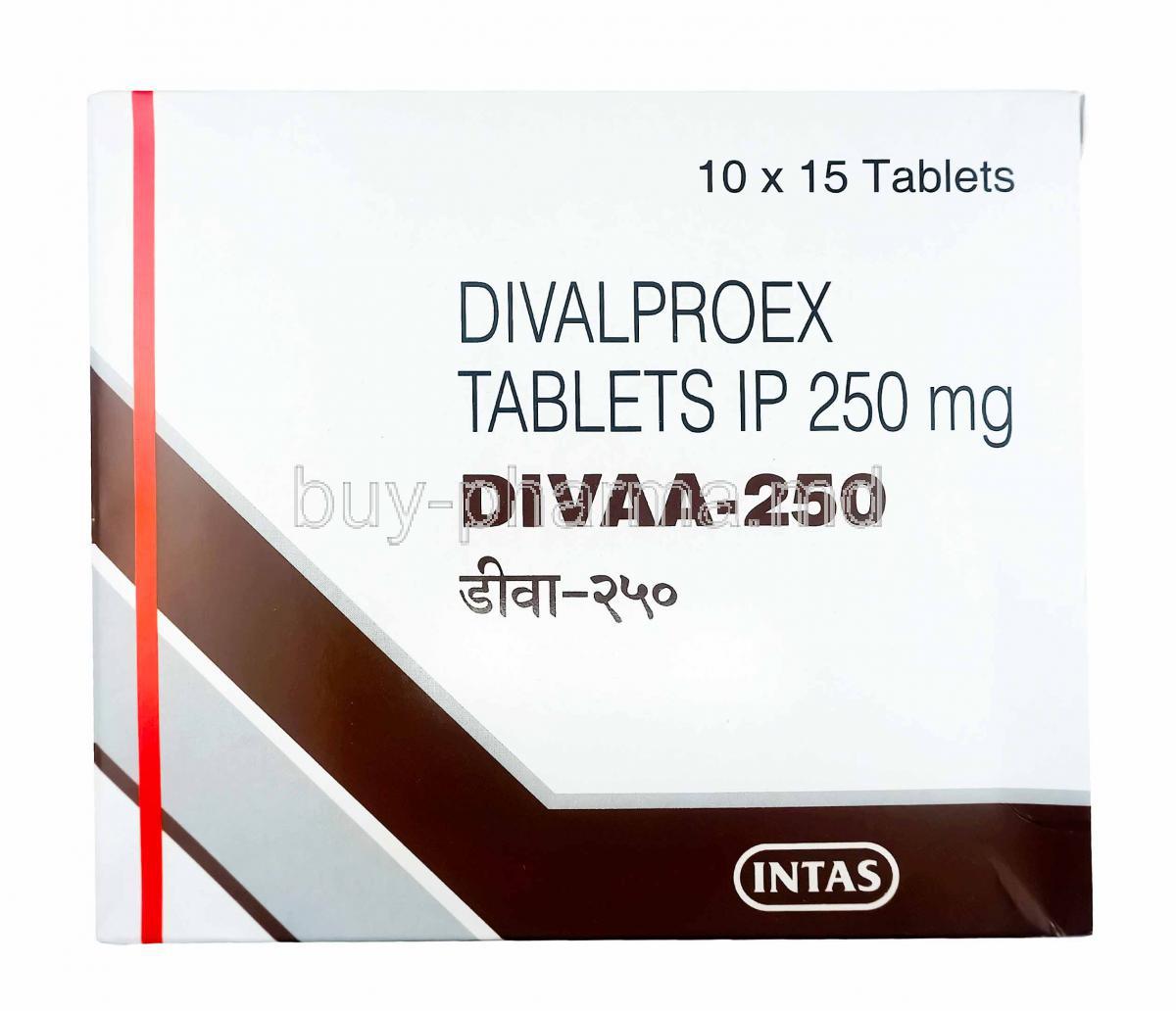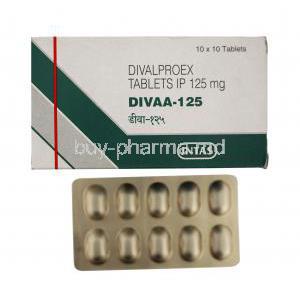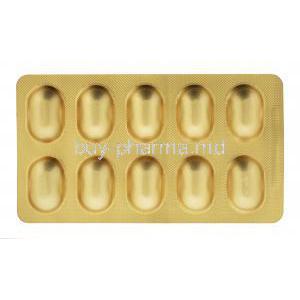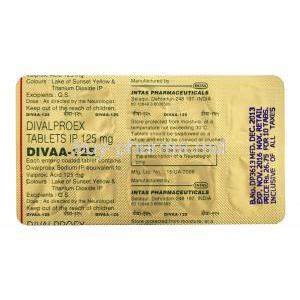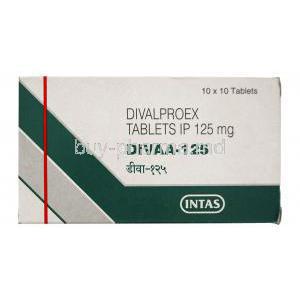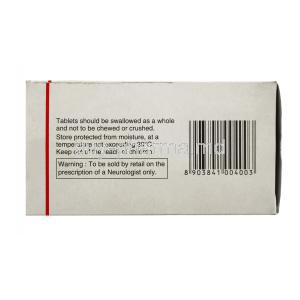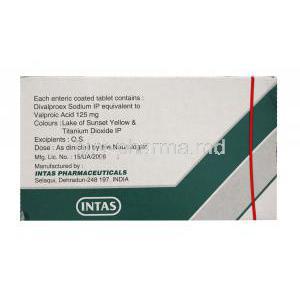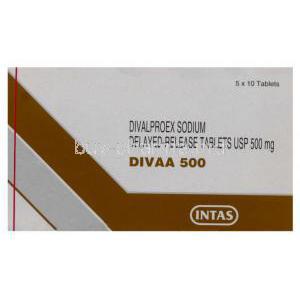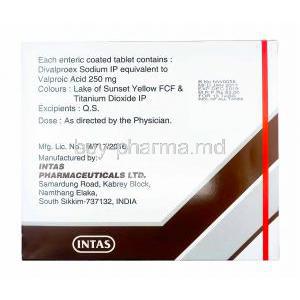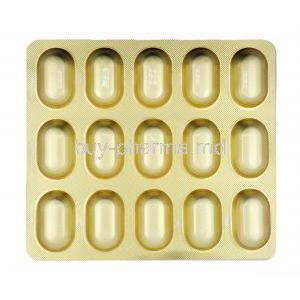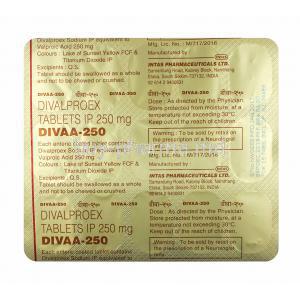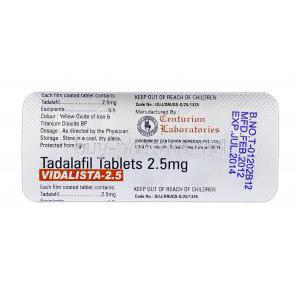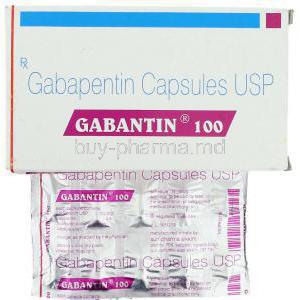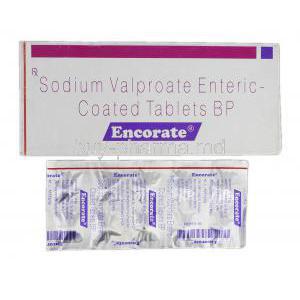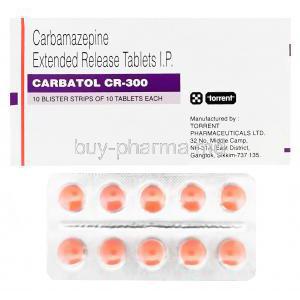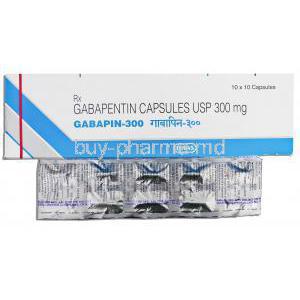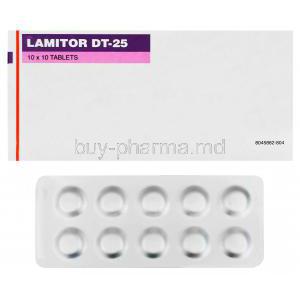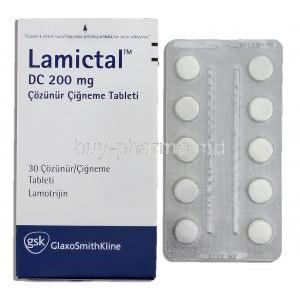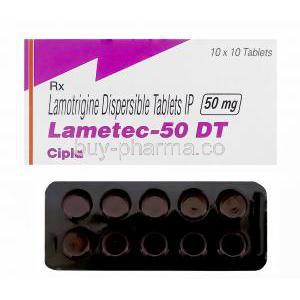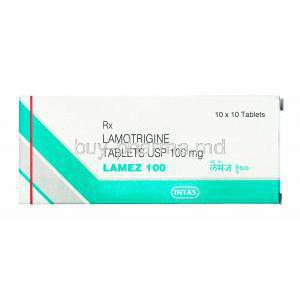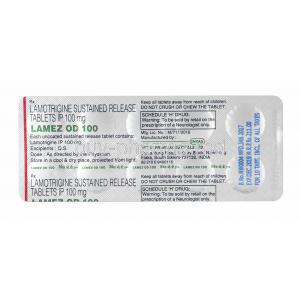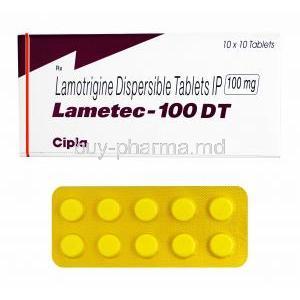Introduction to Divaa (Divalproex)
Overview of Divaa and its Therapeutic Class
Divaa, containing divalproex sodium, is an anticonvulsant and mood-stabilizing agent widely prescribed in neurology and psychiatry. It belongs to the class of medications derived from valproic acid, known for their broad-spectrum activity against seizure disorders and mood dysregulation. The medication is utilized in both acute and maintenance settings, offering long-term stability in various chronic conditions.
Historical Development and FDA Approval Timeline
Divalproex sodium was introduced as a refined derivative of valproic acid in order to enhance gastrointestinal tolerability and improve patient compliance. It gained U.S. FDA approval in the 1980s, initially for seizure disorders, and later expanded to include bipolar disorder and migraine prophylaxis. Over decades of clinical use, its safety profile and therapeutic versatility have been extensively studied, solidifying its place in treatment protocols worldwide.
Difference Between Divalproex Sodium, Valproic Acid, and Sodium Valproate
Although often grouped together, these compounds differ in their formulation and pharmacokinetics:
- Valproic acid – the original compound, effective but associated with gastrointestinal irritation.
- Sodium valproate – a salt form, improving stability and absorption.
- Divalproex sodium – a coordination compound of sodium valproate and valproic acid, engineered to improve gastrointestinal tolerability and broaden clinical use.
Composition and Formulations
Active Ingredient: Divalproex Sodium
The primary pharmacological component is divalproex sodium, which dissociates in the gastrointestinal tract to release valproate ions. These ions mediate the central nervous system effects associated with seizure control and mood stabilization.
Divalproex drug class
Divalproex sodium oral tablet belongs to a class of drugs called anti-epileptics. A class of drugs is a group of medications that work in a similar way. These drugs are often used to treat similar conditions.
Available Dosage Forms
Divaa is accessible in multiple pharmaceutical forms, designed to meet diverse patient needs:
- Immediate-release tablets for rapid absorption.
- Extended-release tablets for stable plasma concentrations throughout the day.
- Sprinkle capsules, which can be opened and mixed with food for pediatric or geriatric populations.
Inactive Ingredients and Excipients
The formulation includes excipients such as cellulose derivatives, starch, and coloring agents. These inactive substances enhance tablet stability, facilitate controlled release, and ensure patient acceptability.
Divalproex vs depakote
Depakote is the brand name for divalproex sodium. This medication is available as a delayed-release (DR) tablet, an extended-release (ER) tablet, and a DR “sprinkle” capsule.
Divalproex DR vs ER
Divalproex ER also yielded improved seizure control and greater improvement of psychiatric symptoms, and was greatly preferred by patients over divalproex DR.
Divalproex Mechanism of Action
Effect on GABA Neurotransmission
Divaa enhances the availability of gamma-aminobutyric acid (GABA), the primary inhibitory neurotransmitter in the brain. By increasing GABA levels, neuronal excitability is reduced, diminishing the likelihood of seizures and stabilizing mood fluctuations.
Influence on Sodium and Calcium Channels
The drug modulates voltage-gated sodium and T-type calcium channels, which are pivotal in neuronal firing. This action curtails the hypersynchronous discharge patterns responsible for epileptic activity and contributes to mood stabilization.
Neuroprotective and Mood-Stabilizing Properties
Beyond its anticonvulsant effects, divalproex exerts neuroprotective influences, mitigating oxidative stress and neuronal apoptosis. These properties contribute to its effectiveness in bipolar disorder and potentially in neurodegenerative conditions.
Medical Uses of Divaa
Divalproex uses
Treatment of Epilepsy and Seizure Disorders
Divaa is approved for multiple seizure types, including absence seizures, complex partial seizures, and generalized tonic-clonic seizures. Its broad-spectrum efficacy makes it indispensable in polytherapy and monotherapy regimens.
Divalproex for bipolar
In psychiatry, divalproex is a cornerstone therapy for acute manic episodes and long-term prophylaxis. It helps reduce manic intensity and prevents relapse, improving overall mood stability.
Migraine Headache Prophylaxis
Divaa is indicated for reducing the frequency and severity of migraine headaches. It does not treat acute migraine episodes but serves as a preventive therapy to enhance quality of life in chronic migraine sufferers.
Off-Label Uses of Divalproex
Behavioral Disturbances in Dementia
Divalproex has been employed in managing agitation, aggression, and irritability in dementia patients, though results vary across clinical trials.
Schizoaffective Disorder and Schizophrenia Augmentation
As an adjunct to antipsychotics, divalproex may help stabilize mood and reduce hostility in treatment-resistant schizophrenia and schizoaffective disorder.
Impulse Control Disorders and Aggression Management
Patients with impulsivity or aggressive tendencies, particularly those with personality disorders, may benefit from divalproex as part of a multimodal therapeutic plan.
Alcohol Withdrawal and Substance Use Disorder Adjunct Therapy
Divalproex can mitigate alcohol withdrawal symptoms and stabilize mood during detoxification. Its role in long-term addiction treatment remains investigational.
Neuropathic Pain and Other Psychiatric Applications
Emerging evidence suggests potential in neuropathic pain syndromes, post-traumatic stress disorder, and borderline personality disorder, although off-label prescribing requires careful clinical judgment.
Divalproex Dosage and Administration Guidelines
Standard Dosing for Epilepsy
For adults and children, initial dosing begins at lower levels and is gradually titrated. Typical maintenance doses range from 10–60 mg/kg/day, depending on clinical response and serum levels.
Recommended Doses for Bipolar Disorder Treatment
In acute mania, loading doses may be utilized for rapid stabilization, followed by maintenance dosing to sustain therapeutic effect.
Migraine Prophylaxis Dosing Schedule
Preventive treatment typically involves lower doses compared to epilepsy and bipolar therapy, often between 500–1000 mg/day in divided doses or extended-release formulations.
Titration, Therapeutic Drug Monitoring, and Serum Level Ranges
Serum valproate concentrations are monitored to optimize efficacy and minimize toxicity. Therapeutic ranges generally fall between 50–125 µg/mL, though individualized adjustments are necessary.
Switching Between Immediate-Release and Extended-Release Forms
Careful conversion ensures bioequivalence. Extended-release forms provide smoother pharmacokinetics, reducing peak-related adverse effects.
Side Effects of Divaa
Divalproex Side Effects
- Gastrointestinal disturbances: nausea, vomiting, abdominal discomfort
- Weight gain and changes in appetite
- Tremors, sedation, and generalized fatigue
- Alopecia and dermatological reactions
Less Common but Significant Side Effects
- Menstrual irregularities and possible development of polycystic ovary syndrome (PCOS)
- Cognitive slowing, memory difficulties, and mood alterations
Rare but Serious Adverse Effects
- Hepatotoxicity and liver failure – especially in children under 2 years and patients with preexisting hepatic disease.
- Pancreatitis – potentially life-threatening, requiring immediate discontinuation.
- Thrombocytopenia and bleeding disorders – necessitating regular blood count monitoring.
- Hyperammonemia and encephalopathy – presenting with confusion, lethargy, and cognitive decline.
Important Warnings and Precautions
Black Box Warnings
Divaa carries critical warnings regarding hepatotoxicity, pancreatitis, and teratogenicity. These risks necessitate vigilant monitoring, especially in vulnerable populations.
Risk of Suicidal Thoughts and Psychiatric Monitoring
As with many antiepileptic drugs, there is an increased risk of suicidal ideation. Regular psychiatric evaluation and patient-family education are imperative.
Long-Term Safety Concerns
Extended use has been linked to metabolic disturbances, endocrine changes, and potential bone density reduction. Regular health assessments are recommended to mitigate these risks.
Divalproex withdrawal symptoms
Rebound seizures.Seizures in non-epileptic persons. ...Anxiety, agitation, irritability.Depression.Insomnia.Headache.Muscle aches, weakness.Loss of coordination, loss of concentration, feeling faint.
Contraindications
Known Hypersensitivity to Valproate Formulations
Divaa must not be administered to individuals with a history of hypersensitivity to valproic acid, divalproex sodium, or any component of the formulation. Hypersensitivity reactions may manifest as rashes, urticaria, angioedema, or in severe cases, anaphylaxis.
Active Liver Disease or Significant Hepatic Impairment
The medication is contraindicated in patients with active hepatic disease or severe impairment of liver function. Hepatic metabolism is the primary route of drug elimination, and compromised liver function greatly increases the risk of fatal hepatotoxicity.
Urea Cycle Disorders
Patients with urea cycle enzyme deficiencies are at extreme risk of developing hyperammonemia when exposed to divalproex sodium. This metabolic derangement may lead to encephalopathy, coma, and life-threatening complications.
Mitochondrial Disorders
Individuals with mitochondrial disorders, such as Alpers-Huttenlocher syndrome, are predisposed to rapid and catastrophic hepatic failure when treated with valproate derivatives. Extreme caution or complete avoidance is mandated in these populations.
Drug Interactions
Antiepileptic Drugs
Concomitant use with other antiepileptic drugs such as phenytoin, carbamazepine, and lamotrigine requires close monitoring. These agents may alter valproate serum concentrations or increase toxicity risks, necessitating dosage adjustments.
CNS Depressants and Alcohol
When combined with sedatives, opioids, or alcohol, divalproex may potentiate central nervous system depression. This leads to drowsiness, impaired coordination, and increased accident risk.
Anticoagulants and Aspirin
Valproate interferes with platelet aggregation and may enhance the effects of anticoagulants such as warfarin. The concurrent use of aspirin further augments bleeding risk, necessitating careful coagulation monitoring.
Hormonal Contraceptives and Women of Childbearing Age
Interactions with hormonal contraceptives can occur, reducing contraceptive efficacy or altering hormone metabolism. Women of reproductive potential should be counseled on reliable contraceptive methods and alternative treatment options when appropriate.
Administration in Special Populations
Elderly Patients
Pharmacokinetics in elderly individuals often show slower clearance and altered protein binding. These changes increase drug exposure and predispose to sedation, confusion, and fall-related injuries. Lower starting doses and careful titration are advised.
Pregnant Women
Divaa poses significant teratogenic risks, including neural tube defects, craniofacial malformations, and cognitive impairment in the offspring. Alternative therapies should be considered, and if use is unavoidable, the lowest effective dose should be prescribed under strict supervision.
Nursing Mothers
Valproate is excreted into breast milk in measurable concentrations. While not universally contraindicated, nursing infants must be monitored for drowsiness, feeding difficulties, or unusual bruising suggestive of hematological effects.
Children and Adolescents
Younger patients may be more susceptible to hepatotoxicity, particularly children under two years of age with metabolic disorders. Behavioral monitoring is recommended due to possible irritability, aggression, or mood alterations associated with therapy.
Overdose and Emergency Management
Clinical Presentation of Overdose
Signs of overdose include profound central nervous system depression, hypotension, respiratory compromise, and hyperammonemia. Patients may present with lethargy, confusion, or progress to coma.
Diagnostic Markers and Laboratory Investigations
Serum valproate concentration, liver enzymes, plasma ammonia levels, and coagulation parameters should be promptly assessed. Electrocardiography may reveal arrhythmias in severe toxicity cases.
Emergency Interventions
- Gastric lavage or activated charcoal for recent ingestion
- Maintenance of airway, ventilation, and hemodynamic stability
- Hemodialysis in cases of severe intoxication with elevated serum concentrations
Use of L-Carnitine in Severe Overdose
L-carnitine has shown benefit in treating valproate-induced hepatotoxicity and hyperammonemia. Intravenous administration may improve outcomes in severe overdose scenarios.
Storage and Handling Precautions
Recommended Storage Conditions
Tablets and capsules should be stored at controlled room temperature, generally below 25°C, protected from light, heat, and excessive moisture to maintain potency.
Safe Handling Practices
Caregivers should avoid crushing or breaking extended-release tablets. When administering sprinkle capsules, the contents should be mixed with soft food and consumed immediately without chewing.
Disposal of Unused Medication
Expired or unused medication must be discarded safely, in compliance with local pharmaceutical disposal regulations. This prevents accidental ingestion, particularly in children and pets.
Patient Counseling and Precautionary Measures
Importance of Adherence
Patients should be advised never to discontinue Divaa abruptly, as sudden withdrawal increases the risk of seizures and destabilization of mood disorders. Adherence ensures steady therapeutic benefit.
Monitoring Requirements
- Routine liver function tests to detect early hepatotoxicity
- Complete blood counts for monitoring thrombocytopenia
- Serum drug level assessments to maintain therapeutic range
Lifestyle Considerations
Alcohol consumption should be avoided due to additive CNS depressant effects. Dietary adjustments, including maintaining a balanced weight and avoiding excessive caloric intake, can mitigate medication-related weight gain.
Warning Signs Requiring Immediate Medical Attention
Patients must be educated to recognize critical warning symptoms:
- Severe abdominal pain or persistent nausea, indicating possible pancreatitis
- Unusual bruising or prolonged bleeding, suggesting platelet dysfunction
- Confusion, lethargy, or new-onset neurological deficits, which may signal hyperammonemic encephalopathy
Divaa, Divalproex FAQ
- What is Divaa used for?
- Is divalproex the same as Depakote?
- Is divalproex used as a mood stabilizer?
- Does divalproex help with sleep?
- How does divalproex make you feel?
- Is divalproex the same as Keppra?
- Can you take divalproex for anxiety?
- Does divalproex work immediately?
- What happens if you stop taking divalproex?
- What to avoid when taking divalproex?
- What organ does divalproex affect?
- Do you gain weight on divalproex?
What is Divaa used for?
The Divaa 500 Tablet is used to treat a range of conditions, including epilepsy, seizures, bipolar disorder, mania, trigeminal neuralgia, and migraines. Essentially, it helps to settle down brain activity.
Is divalproex the same as Depakote?
Yes
Is divalproex used as a mood stabilizer?
Yes
Does divalproex help with sleep?
Yes
How does divalproex make you feel?
Some patients taking divalproex sodium might become agitated or irritable or display abnormal behaviors.
Is divalproex the same as Keppra?
Keppra is available in immediate and extended release forms, while Divalproex is not.
Can you take divalproex for anxiety?
Yes
Does divalproex work immediately?
No
What happens if you stop taking divalproex?
Seizures that do not stop (also known as “status epilepticus”)
What to avoid when taking divalproex?
Alcohol
What organ does divalproex affect?
Liver and pancreas
Do you gain weight on divalproex?
Yes

